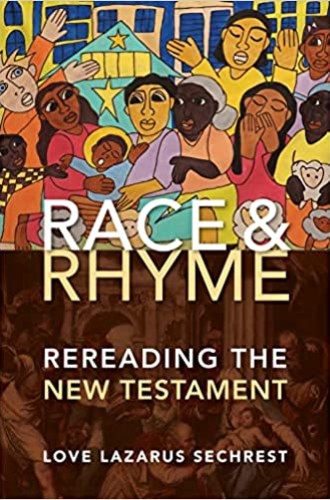Reading the Bible with Love Sechrest
In Race and Rhyme, associative hermeneutics finds its roots in deep, communal, and highly developed wisdom.
Love Sechrest has gifted us with a unique book. She introduces a distinctive proposal for biblical interpretation, associative hermeneutics, a model she develops through critical race theory and womanist sensibilities. Sechrest frequently identifies this model with “rhyming”: identifying appropriate analogies between biblical texts and contemporary questions. She models her approach by applying it to much of the New Testament: Matthew, Luke, John, Acts, 2 Corinthians, Ephesians, and Revelation. Sechrest’s passion for teaching shines throughout: the book concludes with a sample assignment for students.
Few books apply an innovative reading model to a wide sample of texts. Even fewer do so by identifying a distinctive theological standpoint. Further, each chapter opens by explicating a challenging issue from contemporary life, all backed by impressive amounts of research.
Sechrest opens by linking rhyming to race. “As long as they have been preaching,” Black readers of scripture have established associations between their lives and biblical texts. So do most Christian readers of other races, but Black readers habitually read their own stories through biblical ones. Sechrest aims to lend rigor and discipline to that process by spelling out how readers may identify resonances between their interests and biblical texts—and by assessing the limits and problems of those associations.





